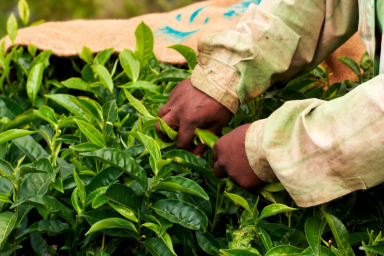Sustainable packaging for small businesses
For many small businesses, packaging is a considerable part of their operations.
However, the detrimental effect of non-biodegradable plastic waste on the environment, the Government’s drive towards slashing carbon emissions, and customers demanding greener materials means companies should address the impact of their packaging on the planet.
A sustainable packaging strategy could help your business become more sustainable and more efficient.
How to create a sustainable packaging strategy
The Sustainable Packaging Coalition defines sustainable packaging as having the following characteristics:
- safe and healthy for individuals and communities throughout its life cycle.
- meeting market criteria for performance and cost.
- sourced, manufactured, transported, and recycled using renewable energy.
- manufactured using clean production technologies and best practices.
- physically designed to optimise materials and energy.
- effectively recovered and utilised in biological or industrial closed-loop cycles.
To create a sustainable packaging strategy for your business, follow these four steps:
Step one: Assess
The first action is to assess your use of packaging.
As part of your strategy, you will need to consider the types of packaging materials you use and the level to which they are sustainable.
Look at how much of your packaging is recycled, recyclable, compostable, or reusable, how much packaging you use to send items to customers, and how much suppliers use when sending stock to you.
You might also benefit from knowing the carbon footprint of your packaging by analysing its impact through its entire lifecycle.
This includes how it is made, sourced, and transported by your supplier, how you use it, how it reaches customers and how customers use and dispose of it.
Another action is to consider what is driving change in your business such as investors, consumers, B2B customers, suppliers, or Government regulation.
Step two: Target and goals
The next step is to set targets for what you want to achieve.
Based on the analysis of your packaging, you may have an idea about which types you want to reduce, remove, or make more sustainable.
You can also decide whether all packaging will be covered by your sustainability strategy, or just be one type such as plastic?
You could then consider setting manageable targets such as:
- reducing the weight of packaging by using less or lighter materials. This reduces use of raw materials and means more packages can be delivered during one delivery round, which reduces the carbon footprint.
- increasing the amount of recycled, recyclable, compostable and reusable packaging.
It’s good to have targets that are ambitious, but they should also be achievable and realistic.
For example, while compostable packaging might seem like a good solution, your customers may not be motivated enough to compost their packaging.
You might consider measuring your targets against the efforts of other similar businesses and organisations.
Many companies publish their sustainability policies online, and you can take inspiration from the achievements of signatories to the UK Plastics Pact.
Step three: Plan
Think of your sustainable packaging strategy as a roadmap.
It may help to decide where you want to be by a particular point in time and work backwards setting out what you want to achieve by certain dates.
Before you go public with your plan, it can help to have buy-in from all internal stakeholders such as senior managers and other employees.
If they are on board and empowered, you are much more likely to achieve your goals.
Your supply chain needs to be on board too.
Involve them in your plan and work with them to reduce unsustainable packaging in their processes.
Step four: Implement and measure
The final step is implementing your sustainable packaging strategy.
You could work with packaging partners and others to ensure your sustainability targets are met and engage your supply chain to implement the necessary changes.
A particular person or a team of people in your organisation could be tasked with staying up-to-date with new packaging trends, technologies, and regulations in case your plan and targets need to be updated.
You could also use websites such as Packaging News, Sustainable Packaging News, Packaging Digest and the Department for Environment, Food and Rural Affairs to stay informed.
It can be valuable to regularly measure your progress against your targets.
Sustainable packaging for small businesses: packaging changes to get you started
You have many options when it comes to sustainable packaging, from paper bubble wrap to Mushroom root packaging.
Take a look at our article on eco-packaging alternatives for your business.
Next steps for sustainable packaging
For more advice on sustainable packaging, the following organisations can help:
Reference to any organisation, business and event on this page does not constitute an endorsement or recommendation from the British Business Bank or the UK Government. Whilst we make reasonable efforts to keep the information on this page up to date, we do not guarantee or warrant (implied or otherwise) that it is current, accurate or complete. The information is intended for general information purposes only and does not take into account your personal situation, nor does it constitute legal, financial, tax or other professional advice. You should always consider whether the information is applicable to your particular circumstances and, where appropriate, seek professional or specialist advice or support.
Tags related to content:
Green Decoder
Featuring a glossary of sustainable terms curated in partnership with the Nottingham Business School, Nottingham Trent University, our green decoder is helping smaller businesses decipher the terminology surrounding decarbonisation.



